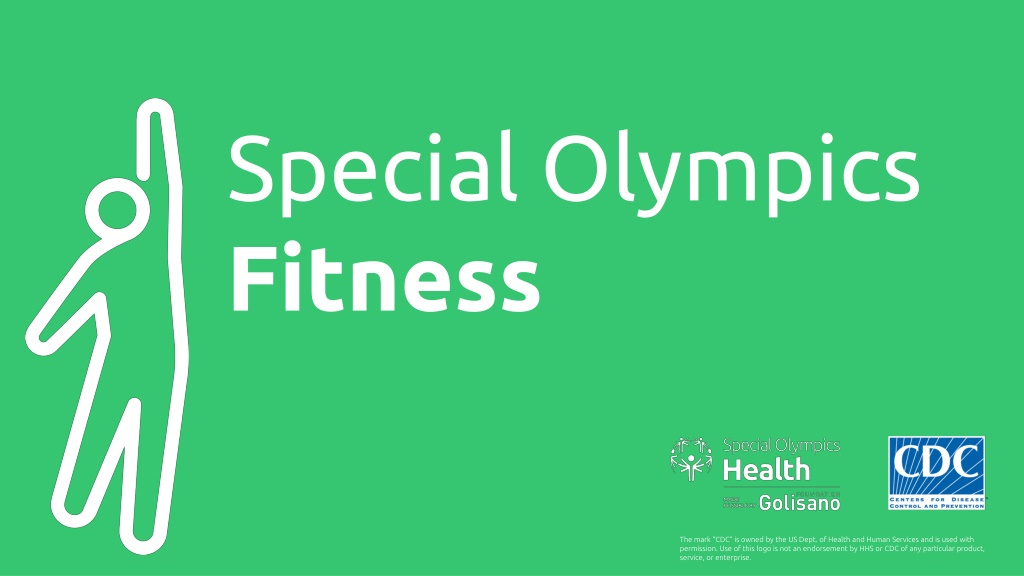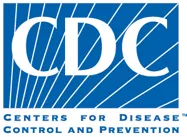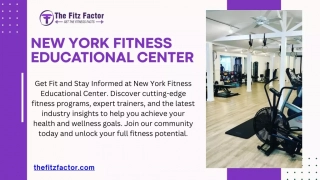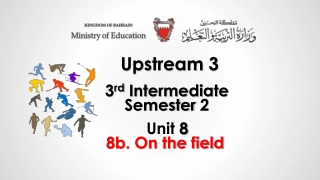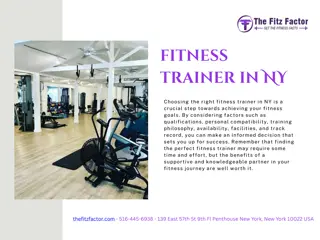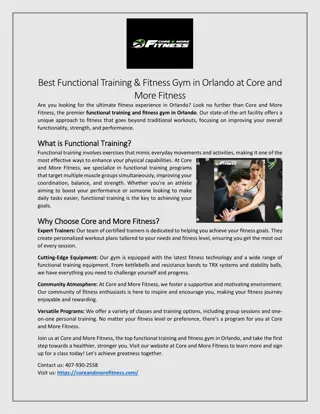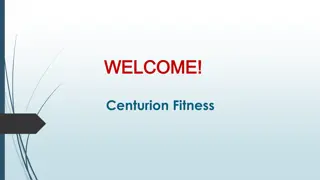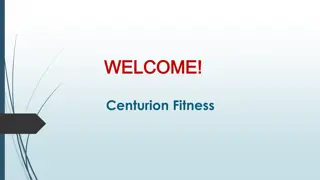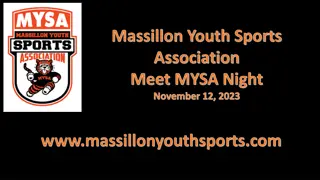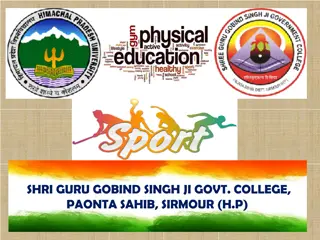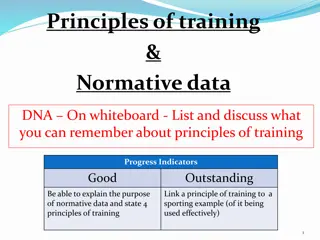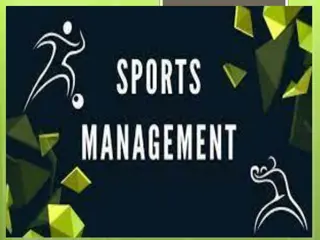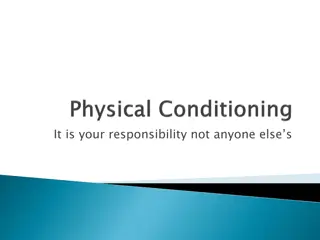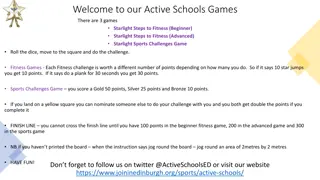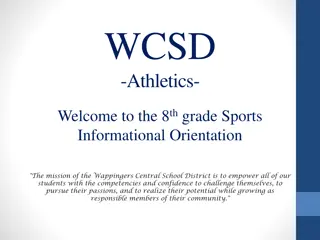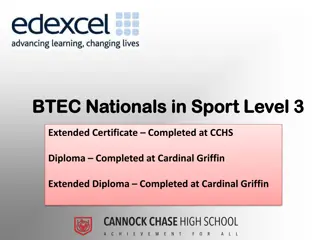Special Olympics Fitness: Promoting Health and Performance through Physical Activity
Special Olympics Fitness focuses on providing year-round sports training and athletic competition for individuals with intellectual disabilities, promoting physical fitness, courage, joy, and community connections. The program emphasizes optimal health and performance through physical activity, nutrition, and hydration. Benefits for athletes include improved endurance, speed, strength, flexibility, healthy weight, energy levels, focus, and recovery, as well as reduced risk of injuries and illnesses. However, there are concerns regarding low bone density, overweight/obesity, low exercise frequency, flexibility, strength, and balance issues among athletes. Promoting fitness through seamless efforts, role modeling, proper warm-up, cool-down, active practices, and encouraging physical activity outside of practice is essential for athletes' overall well-being.
Download Presentation

Please find below an Image/Link to download the presentation.
The content on the website is provided AS IS for your information and personal use only. It may not be sold, licensed, or shared on other websites without obtaining consent from the author. Download presentation by click this link. If you encounter any issues during the download, it is possible that the publisher has removed the file from their server.
E N D
Presentation Transcript
Special Olympics Fitness The mark CDC is owned by the US Dept. of Health and Human Services and is used with permission. Use of this logo is not an endorsement by HHS or CDC of any particular product, service, or enterprise.
Mission Statement Provide year-round sports training and athletic competition in a variety of Olympic-type sport for children and adults with intellectual disabilities giving them continuingopportunities to develop physical fitness, demonstrate courage, experience joy, and participate in a sharing of gifts, skills, and friendships with families, other Special Olympics athletes, and the community.
Special Olympics Fitness Optimal health and performance through adequate physical activity, nutrition, and hydration.
Benefits of Fitness for Athletes Enhanced sport performance through improved Endurance/stamina. Speed and agility. Strength and power. Flexibility. Healthy weight. Increased energy level, improved focus, and better recovery after practices & games. Reduced risk for sport-related injuries. Decreased risk for illnesses and chronic diseases. Improved quality of life.
Healthy Athletes Data: Some Cause for Concern Problem identified % Athletes SONA 25.6 Low Bone Density 73.3 Overweight or obese* 35.3 Low Exercise Frequency (<3 days/week) 71.3 Flexibility Problems 56.6 Strength Problems 75.7 Balance Problems *adult athletes with BMI over healthy range
Benefits of Fitness for Athletes To be a great athlete, you need to be a healthy athlete.
Promoting Fitness Fitness should be a seamless part of what you already do. Small, simple efforts can have a big impact. Present and reinforce fitness messages. Be a role model.
Physical Activity Proper warm-up and cool-down optimize practice sessions and reduce injury risk. Active practices maximize athlete engagement and minimize waiting/standing. Practices include exercise/conditioning use Fitness Cards to integrate exercises that promote fitness into practices. Physical activity outside of practice is encouraged inspire athletes to be active for 30 minutes everyday.
Nutrition Connection between nutrition and sports performance is discussed. Suggestions for healthy meal and snack choices are discussed. Healthy choices are offered at team meals/snacks.
Hydration Provide adequate water breaks during practices. Simple messages about hydration and performance. Signs, symptoms and effects of dehydration are presented and reinforced during practice. Water is encouraged as the best beverage choice both in and out of practice.
Supporters Athletes! Family Members Other coaches Fitness Professionals College students
